Awards
NREL's innovative discoveries and exceptional staff are regularly recognized for national and global leadership in energy efficiency and renewable energy research and development.

Learn about additional employee recognition and honors recognizing NREL's buildings for outstanding design, efficiency, and sustainability features.
R&D 100 Awards
NREL has won 74 R&D 100 Awards. Widely recognized as the Oscars of Innovation, the R&D 100 Awards are presented by R&D Magazine to identify and celebrate the top technological advances of the year.
2023
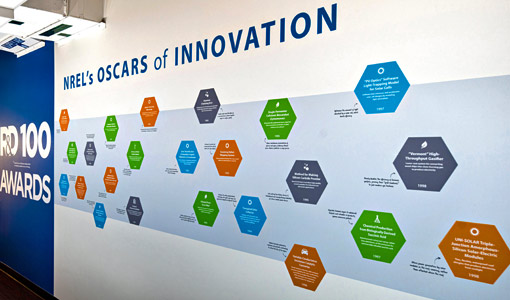
Renewable Energy Potential Model
Researchers developed the Renewable Energy Potential Model to calculate renewable energy capacity, generation, and cost.
Simulation and Emulation for Advanced Systems
The Simulation and Emulation for Advanced Systems tool mimics and validates energy transmission and distribution solutions.
Read more about NREL's 2023 R&D 100 Awards.
2022
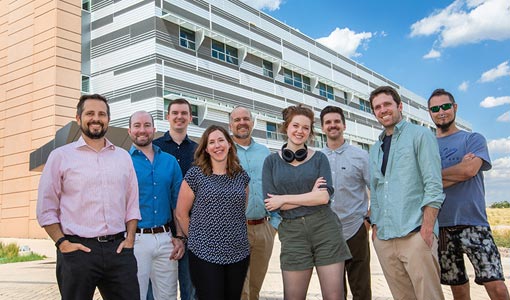
Standard Energy Efficiency Data Platform
The Standard Energy Efficiency Data Platform is a data management and analysis tool that helps cities improve their building stock and reduce carbon emissions.
Read more about NREL's 2022 R&D 100 Award.
2021

Wave Energy Converter Simulator
The Wave Energy Converter Simulator is the first open-source code allowing wave energy developers to simulate Wave Energy Converter dynamics and performance, which lowers costs and reduces R&D cycle time in this pivotal and growing field.

dGen
dGenTM is an open-source software that simulates customer adoption of distributed energy resources through 2050. Used by government and grid-planning organizations to predict future energy systems at high spatial resolution and under diverse scenarios, dGen is an engine for equitably and cost-effectively integrating more distributed energy resources.
Read more about NREL's 2021 R&D 100 Awards.
2020
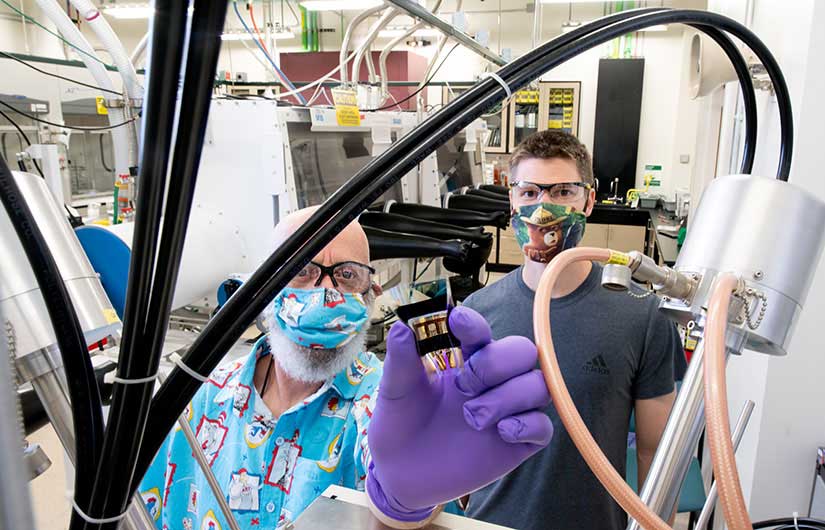
Dimethylammonium-Containing Wide-Bandgap Perovskites
Dimethylammonium-Containing Wide-Bandgap Perovskites are high-performance tandem solar cells that could allow vehicles to be powered directly by photovoltaics (PV). As the technology matures, the research could also enable the use of portable or wearable PV devices.

Dynamic Hydride Vapor Phase Epitaxy for Low-Cost III-V PV Devices
This process provides a means to bring high-priced, high-efficiency solar technology now used in the space program down to Earth at a reasonable cost. The dynamic hydride vapor phase epitaxy process removes key barriers to the mass production of III-V semiconductors.
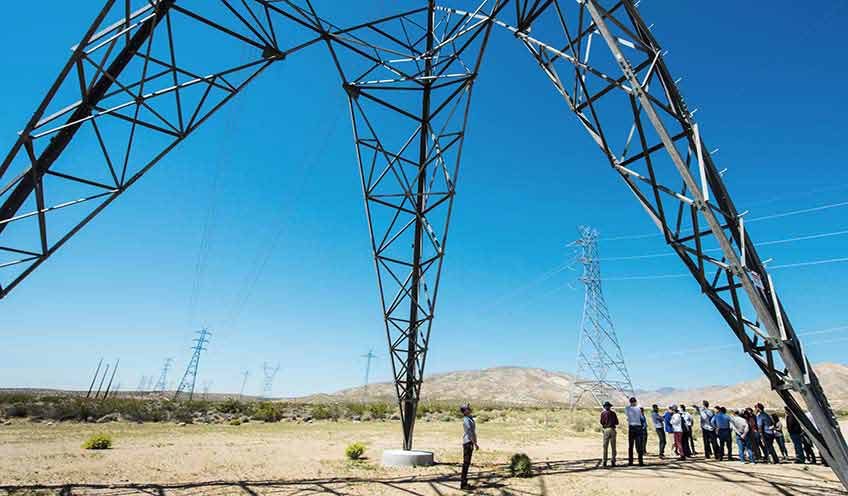
Regional Energy Deployment System 2.0
This free, open-access tool empowers users to explore least-cost pathways for large-scale power sector transformation. The Regional Energy Deployment System allows users to examine the interactions among policy, technology, economics, and the environment when integrating renewables into the grid from now through 2050.
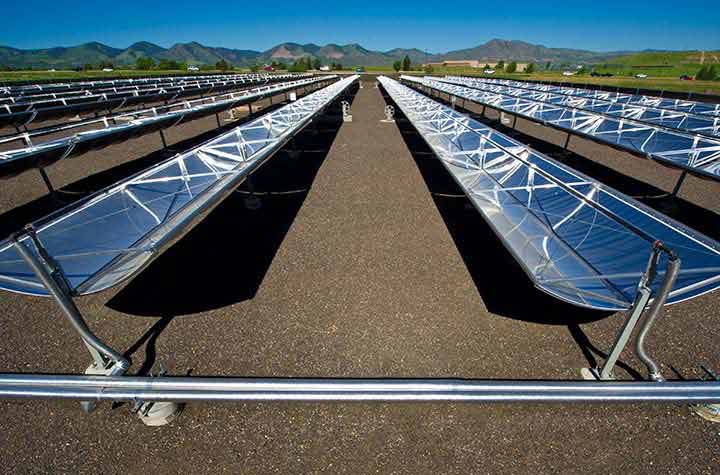
Process for Mitigating Hydrogen Buildup in Parabolic Trough Power Plants
NREL and Acciona Solar Power Inc. developed a process and technology to reverse the effects of hydrogen buildup in operating concentrating solar-thermal power plants, returning production to original levels.
Read more about NREL's 2020 R&D 100 Awards.
Historical R&D Awards
2019
PREconfiguring and Controlling Inverter SEt-points, or PRECISE, is a tool that allows utilities to identify optimal inverter modes and settings and maximizes the cost-effective use of installed solar systems.
ResStock is a building analysis tool that allows states, municipalities, utilities, and manufacturers to identify which home improvements save the most energy and money.
Read more about NREL's 2019 R&D 100 Awards.
2018
foreseeTM Energy Management System relies on user preferences to control and coordinate a home's connected appliances and electronics. It asks users to rank what's most important to them about living in their home and automatically adjusts the operation and scheduling of the devices accordingly.
Acrylonitrile through nitrilation is a renewable method to make carbon fiber that provides a cleaner process to produce acrylonitrile, a building block for carbon fiber. Biomass replaces petrochemicals as the starting point, making the process renewable. More than 7 billion kilograms of acrylonitrile are produced globally each year for use in such products as clothes and carpets.
Read more about NREL's 2018 R&D 100 Awards.
2016
EcoSnap-AC Heat Pump System is an alternative to window-mounted air conditioning units that is quieter, more energy efficient, heats and cools, doesn't jeopardize home security, is easy to install, and can be left in place year-round.
The Battery Internal Short-Circuit Device simulates a true internal short circuit within a battery cell, providing researchers with reliable data to determine how the size, resistance, and location of an internal short circuit will affect safety measures implemented in new battery designs.
The High-Temperature, Wide Bandgap Underhood Inverter is a traction drive for electric vehicles that could significantly boost their adoption by consumers. Wolfspeed, the company behind the inverter, partnered with NREL and Toyota to ensure that the technology is adoptable for implementation into vehicle applications.
Read more about NREL's 2016 R&D 100 Awards.
2015
Producing Bioethylene via Cyanobacteria: Makes bioethylene from cyanobacteria without the traditional use of petroleum while decreasing the amount of carbon dioxide emitted during production
Read more about NREL's 2015 R&D 100 Awards.
2014
Direct Monocrystalline Silicon Wafer Growth by High-Throughput Epitaxy: Provides a process to grow high-efficiency thin monocrystalline silicon solar cells in large quantities at a cost of about 50 cents/watt
HP Apollo 8000 System: Uses component-level warm-water cooling to dissipate heat generated by the supercomputer, thus eliminating the need for expensive and inefficient chillers in the data center
Read more about NREL's 2014 R&D 100 Awards.
2013
Image Processing Occupancy Sensor: Combines an inexpensive camera with computer vision algorithms that can recognize the presence of human occupants
Isothermal Battery Calorimeters: Provides the only calorimeters in the world capable of performing the precise thermal measurements needed to make safer, longer-lasting and more cost-effective lithium-ion batteries
Mono-Crystalline Solar Cells: Allows for a greater percentage of incoming sunlight to be converted to electricity relative to conventional crystalline solar cells
2012
Desiccant-Enhanced Evaporative Air-Conditioning Cycle: Cools commercial buildings using less energy than a traditional coole, provides superior comfort in any climate, releases far less carbon dioxide, and could cut costly peak electricity demand by 80%
SJ3 Solar Cells: Uses tunable bandgaps, lattice-matched architecture, and ultra-concentration tunnel junctions to achieve conversion efficiency of up to 50%
2011
Innovalight Silicon Ink Process: The first liquid silicon sold in the marketplace for use in solar cells
Flash Quantum Efficiency System for Solar Cells: A way to assess the quality of solar cells at a speed that is about 1,000 times faster than previous methods
Optical Cavity Furnace: A system that increases the efficiency of solar cells by 3%-4% by uniformly heating crystalline solar cells and semiconductor materials
2010
"Black Silicon" Nanocatalytic Wet-Chemical Etch: An inexpensive, one-step method to reduce light reflection from silicon wafers, which reduces manufacturing production cost and capital expense
Amonix 7700 Solar Power Generator: A generator that produces 40% more energy than conventional fixed photovoltaic panels
2009
Ultra-Accelerated Weathering System: A multifaceted ultraviolet solar concentrator used to speed up the exposure of coatings, paints, and other materials to determine their durability and resistance to weathering
SkyTrough Parabolic Trough Solar Concentrating Collector: A reflector material developed to create a groundbreaking and low-cost system for utility-sized power generation
PowerPlane UX Microbattery: A safe, rechargeable, deep-cycle, thin-film lithium microbattery
2008
Inverted Metamorphic Multijunction Solar Cell: A system that eliminates complex manufacturing methods for creating thin-film photovoltaics
Hybrid Copper Indium Gallium Diselenide: A new technology for manufacturing Hybrid Copper Indium Gallium Diselenide, or thin-film PV employing layers of copper indium gallium diselenide
2007
High-Efficiency Metamorphic Multi-Junction Concentrator Solar Cell: The first solar cell to break the 40% conversion efficiency barrier
2005
TREAT with SUNREL Energy Analysis Software: A tool that makes it much easier for building professionals to perform accurate energy audits and reduce the impact of building energy use on the environment
Sinton QSSPC Silicon Evaluation System: A system that helps manufacturers detect impurities and defects in silicon material early in the solar cell production process
2004
Enzymatic Hydrolysis of Biomass Cellulose to Sugars: An enzymatic hydrolysis technology that inexpensively breaks down the cellulose fraction of lignocellulosic biomass to sugars
Lightweight, Flexible, Thin-Film Copper Indium Gallium Diselenide PV Modules: The world's first portable, flexible PV systems made from copper indium gallium selenide for use in mobile applications
2003
High-Rate Vapor Transport Deposition for CdTe PV Modules: The world's first such mass-production method for making polycrystalline thin-film modules
2002
NanoCeram Nanoalumina Fiber: Fibers that are ideal for bioactive filtration, chemisorption of heavy metals, and bone tissue engineering
PowerView Semi-Transparent Photovoltaic Module: A semi-transparent solar module that can be used in lieu of architectural glass for many applications
Smart, High-Performance Polyphenylenesulfide Coating System: A smart coating system that repairs itself
2001
Current-Interrupt Charging Algorithm for Lead-Acid Batteries: A simple approach for recharging lead-acid batteries that extends the cycle life of the batteries by 300%–400%
DRWiN Electronically Scanning Antenna: The world's first affordable, commercial scanning antenna
Triple-Junction Terrestrial Concentrator Solar Cell: A solar cell that generates a lot of energy from just a very little amount of material
2000
Electroexploded Metal Nanopowders: A new approach to ultrafine metal powder production that opens up opportunities in materials science and commercial applications
North Wind 100/20 Wind Turbine: A state-of-the-art wind turbine that is ideal for extreme cold conditions perfect for remote locations that may be off-grid or local-grid
Real-Time Biomass Analysis: A portable system that employs a laser and a spectrometer to quickly and inexpensively determine the chemical composition and the mechanical properties of wood
1999
Advanced Direct-Contact Condenser: A new way of condensing steam that enables geothermal electric plants to generate more electricity more cheaply.
Siemens Solar St-Family of Solar (CIS) Modules: The first large-area solar electric modules made from the promising thin-film material of copper indium diselenide
1998
UNI-SOLAR Triple-Junction Amorphous-Silicon Solar-Electric Modules: Thin, flexible, waterproof roof shingles that efficiently produce electricity from sunlight
"Vermont" High-Throughput Gasifier: Turns wood chips into a clean gas for use in fuel cells or gas turbines to produce electricity
1997
"PV Optics" Software Light-Trapping Model for Solar Cells: Software that enhances and accelerates solar cell designs by modeling how light is absorbed in cell materials
Chemical Production from Biologically Derived Succinic Acid: Derived from corn syrup (instead of petroleum), this acid is used to make clothes, paints, inks, plastics, and polymers.
1996
Variable-Conductance Insulation Catalytic Converter: A great idea for clean air, this catalytic converter can be used on cars, small trucks, and SUVs to enable them to more than meet EPA's stringent new requirements for emissions.
1995
Method for Making Silicon Carbide Powder: A novel technique for producing fine, pure, inexpensive powder for use in making industrial and electronic ceramic products
Single-Fermenter Cellulosic Biocatalyst (Zymomonas): This metabolically engineered micro-organism enables the efficient conversion of wood, grass, waste and other cellulose material into ethanol fuel.
1994
Transpired Solar Collector: A simple, elegant idea: a wall siding that uses strategically placed holes to capture solar energy to heat and ventilate buildings
1993
Ethanol from Corn Fiber: A process that enables the conversion of the carbohydrate portion of corn to ethanol fuel
Scanning Defect Mapping System: Uses a scanning laser to produce maps of crystal defects in semiconductor materials
Aqueous Chelating Etch: An innovative etching process used to develop microelectronic circuits, high-temperature superconductors, and opto-electronic devices
1992
Atomic Processing Microscope: This microscope enables the manipulation of single atoms and allows the properties of materials to be altered on a nanoscale.
Solar Detoxification of Hazardous Organic Materials in Groundwater: Uses sunshine and a simple catalyst to purify contaminated water
1991
Compact Vacuum Insulation: Very thin material providing extremely high insulation for use in refrigeration, walls, floors anything that needs to be kept warm or cold
Gallium Indium Phosphide/Gallium Arsenide Tandem Solar Cell: A light, highly efficient solar cell that has become the world's standard for powering earth-orbiting satellites
Cadmium Telluride Photovoltaic Modules: The first large-size devices to be made from this new thin-film material, which promises to help drop the cost of solar electricity
Advanced Wind Turbine Blades: Wind blade designs that have become the industry standard and that produce up to 30% more electricity than previous designs
1990
Inexpensive Phenol Replacements from Biomass: A process that converts wood chips, sawdust, and bark into an oil for making plastics, glues, insulation, fuels, and chemicals
1989
Spectroscopic Scanning Tunneling Microscope: At forefront of nanotechnology, this instrument characterizes electro-optical materials down to the atomic scale
1985
Volume-Indexed Secondary Ion Mass Spectrometry: Provides 3D information about the composition of electronic materials and devices
1984
Copper Indium Diselenide Solar Cell: The first solar cell to use very thin films (less than the thickness of a human hair) of a promising semiconductor material
Flash-Evaporation Method/Apparatus (Spout Evaporator): An inexpensive and efficient way to evaporate water to steam, which drives a turbine to generate electricity
1982
Oxygen High-Pressure Gasifier: Uses heat, oxygen, and pressure to turn wood and waste into a gas for generating electricity and heat
R&D Magazine Awards
- 2015 Editor's Choice Award – Producing Bioethylene via Cyanobacteria, Jianping Yu
- 2014 Editor's Choice Award – HP Apollo 8000 System, Steve Hammond and team
- 2008 Editor's Choice Award – Hybrid CIGS (copper indium gallium diselenide), David Ginley and team
- 2008 Editor's Choice Award – Inverted Metamorphic Multijunction Solar Cell, Mark Wanlass and team
Share
